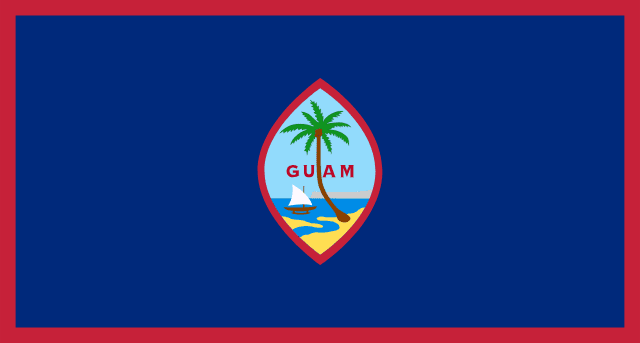Country Information
| Sovereign State | No (Unincorporated territory of the United States) |
| Country Codes | GU, GUM, 316 |
| Official Name | Guam |
| Continent | Oceania |
| Capital | Hagåtña |
| Government Type | Unincorporated organized territory of the United States |
| Currency | United States Dollar (USD) |
| Calling Code | +1 671 |
| Member Of | As a territory of the United States, participates in international organizations through the U.S. |
| Population | Approximately 170,000 (as of 2023) |
| Total Area | 544 square kilometers |
| Highest Point | Mount Lamlam (406 meters or 1,332 feet) |
| Lowest Point | Pacific Ocean (0 meters or 0 feet) |
| GDP Per Capita | Integrated with the economy of the United States; specific data may vary |
| Life Expectancy | Similar to the United States, around 78 years (as of 2023) |
| Internet TLD | .gu |
The Star-Spangled Banner (National Anthem of the United States)
Oh, say can you see, by the dawn’s early light,
What so proudly we hailed at the twilight’s last gleaming,
Whose broad stripes and bright stars through the perilous fight,
O’er the ramparts we watched were so gallantly streaming?
And the rocket’s red glare, the bombs bursting in air,
Gave proof through the night that our flag was still there;
Oh, say does that star-spangled banner yet wave,
O’er the land of the free and the home of the brave?
Flags of Neighboring Countries



History of the Guam Flag
The flag of Guam was officially adopted on February 9, 1948. Its design was created by Helen Paul, the wife of a naval officer stationed on the island, in response to a contest to create a flag for Guam. The flag’s dark blue background represents the island’s evening skies and the Pacific Ocean. In the center, the coat of arms of Guam is placed, depicting a proa sailing in Agana Bay near Hagåtña, with a palm tree in the foreground.
The proa, a local sailing vessel, symbolizes the island’s seafaring traditions and skills, a significant part of Guam’s history and culture. The palm tree represents an important part of Guam’s landscape and symbolizes the tropical flora of the island. The red border around the flag symbolizes strength and the blood shed in World War II during the Japanese occupation and the subsequent liberation of Guam by American forces.
Throughout Guam’s history, the flag has remained relatively unchanged, symbolizing the island’s resilience and enduring spirit. The flag represents a blend of the native Chamorro culture and the influences of colonial powers, notably Spain and the United States. The adoption of the flag was a significant step in Guam’s journey towards self-governance and recognition of its unique cultural identity within the Pacific region and under American administration.
The flag of Guam not only represents the island’s geographical and cultural features but also its historical journey. It is a source of pride and unity for the people of Guam, reflecting their heritage and aspirations as part of the larger American political framework, yet distinct in their cultural identity.

